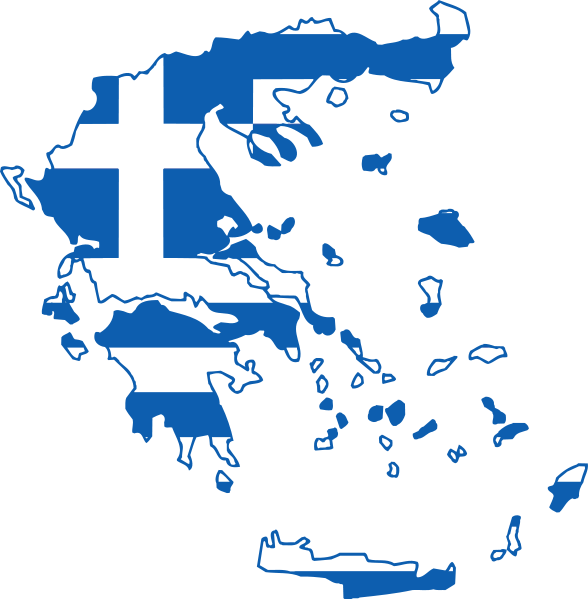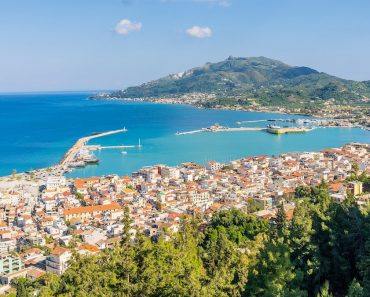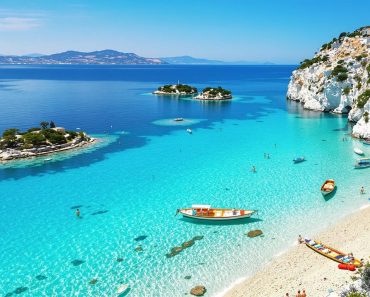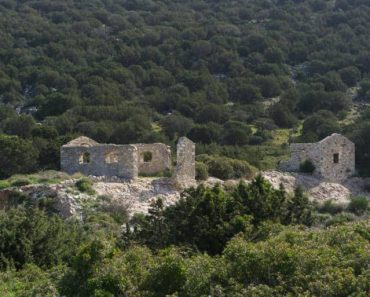This article was produced by National Geographic Traveller (UK).
The southernmost part of mainland Greece is the image of the country that many travellers hold in their heads. Home to ancient sites that speak of myths and legends, and a coastline sprinkled with pretty villages and white-sand beaches, it has all the appeal of Greece’s islands but few of their crowds. But there are plenty of other reasons to plan a trip, too, from staying on an agriturismo to visiting wineries and olive farms and birdwatching on a lagoon.
Stay on a mountain farm
A time-lost magic hangs in the air at this delightful agriturismo in the Helmos mountain village of Kerpini near the town of Kalavrita. Here, you can properly slip back to nature for a spell in some of the most rugged scenery in the Peloponnese. It’s all about the outdoors, whether you’re hanging out with farm animals (including resident donkey, Archondoula), picking fruit, herbs and vegetables on the organic farm, mushroom hunting in the fir forest or helping harvest grapes the traditional way before a wine-tasting in autumn. Whichever season you visit, days spent hiking, canoeing or skiing in the surrounds slide into inky nights that are perfect for stargazing. Your hosts cook up delicious farm-to-fork dinners, too.
Enjoy local wines
Vines march up rolling hills to cypress-tree studded heights in Nemea in the northeastern Peloponnese, one of Greece’s foremost wine-growing regions. The scenery is worth toasting in the 40 wineries sprinkling the region, many of which open their doors year-round for tours and tastings. April and May are glorious for vineyard walks and picnics, mid-August and September for catching the harvest in full swing. Stop at the carbon-neutral Semeli Estate for sublime views and ‘wine and dine’ experiences, where both recent and older vintages are paired with locally reared meats and kitchen garden produce. Or try family-run Ktima Bairaktaris nearby for wines matched with meat and cheese.

At Orias Mountain Guesthouse & Farm, choose between visiting farm animals, picking produce on the organic farm, hunting for mushrooms in the fir forest or harvesting grapes before a wine-tasting. Photograph by Orias Mountain Guesthouse & Farm
Make your way to forgotten caves
Take a boat into the half-light of the Diros Caves to experience a fantasy forest of pink-white stalactites and stalagmites. Some are like wax-drip candles, others are as fine as lace, and all have been shaped over millennia deep in these flooded caves on the Peloponnese’s wild, rugged Mani Peninsula. Inhabited since Neolithic times, the caves were abandoned after an earthquake in the fourth century BCE and largely forgotten about until local husband and wife speleologists discovered and first properly explored them in 1949. To get to them, you’ll take a boat across an ethereal green-blue lake, then you’ll walk the remainder of the trail that penetrates deep into the caves — a mere fraction of what’s been explored so far.
Track down legends on Voidokilia Beach
Greece punches high for coastal beauty but few beaches make you gasp out loud like Voidokilia: a perfect smile of blonde sand in the Messinia region of the southwest Peloponnese. Fringed by dunes, this crescent-shaped bay slides into the Ionian Sea as it fades from bright turquoise to deepest sapphire. Myth has it that this is Homer’s ‘sandy Pylos’, where Telemachus was welcomed by King Nestor when searching for Odysseus. Go for a swim in that appealing water, then roam the spectacularly biodiverse Gialova Lagoon behind the beach, habitat for over 270 species of bird, including flamingos, herons, ospreys and great egrets. For more mythology, follow the signs to Nestor’s Cave, where, lore has it, Greek deity Hermes hid 50 cattle he stole from fellow god Apollo. From here, hike up to the ramparts of Paleokastro, a ruined medieval castle built on the site of the acropolis of ancient Pylos, for mood-lifting views across the bay.
Go big on olives
Silver-green leaves shimmering in the heat, gnarled trunks and the sunset strum of cicadas — the Peloponnese would not be the Peloponnese without its olive groves. More than 30 million olive trees blanket the peninsula, which produces around a third of Greece’s olive oil. In the inland village of Androusa in Messinia, The Olive Routes offers guided tours tapping into this rich culinary heritage. Here, 95% of what’s produced is the good, green, extra-virgin stuff, with smooth, nutty, herby notes. The company pairs insightful walks through centuries-old olive groves enclosed within medieval castle walls with visits to traditional and modern olive oil mills, tasting workshops and meals prepared with olive oil. If you want to learn how to cook with it, join the half-day olive oil cookery class, where you’ll be using the ingredient in everything from filo pastry to tzatziki (yoghurt, cucumber, garlic and dill dip).

Olive Routes tour company pairs insightful walks through centuries-old olive groves with visits to traditional and modern olive oil mills, tasting workshops and meals prepared with olive oil. Photograph by Dimitris Palaiogiannis
Ride the rails through a Gorge
Board the rack-and-pinion train through the river-woven, heavily forested, waterfall-splashed Vouraïkos Gorge and you’ll be glued to the window for the entire journey. Negotiating steep gradients since 1896, the 14-mile, hour-long ride from Diakopto to Kalavrita unzips some of the wildest scenery in the Peloponnese, with steep cliffs that feel close enough to lean out and touch. The train curves along ledges, hovers over the rushing river below, burrows through tunnels and climbs more than 2,300ft using its cog system for traction. If you prefer to hike it, a path hugs the track and forms part of the long-distance E4 trail. Allow seven hours and bring your own picnic.
Embrace the romance of the Mani at Patrick Leigh Fermor House
British author Patrick Leigh Fermor (1915-2011) caught the world’s imagination with his eye-opening accounts of travelling the world. And never more so than in Mani: Travels in the Southern Peloponnese (1958), which so eloquently captured the wildly beautiful beaches, mountains and olive groves of the region’s central peninsula. He loved the Mani so much that he came here with his wife, Joan, and built a villa in a small coastal town of Kardamyli, where they lived for the rest of their lives. Sat within Mediterranean gardens lush with cypresses, olive trees and wildflowers, the warm-stone villa is now a museum and offers a fascinating insight into the mind of a great writer, traveller and romantic.
To subscribe to National Geographic Traveller (UK) magazine click here. (Available in select countries only).






